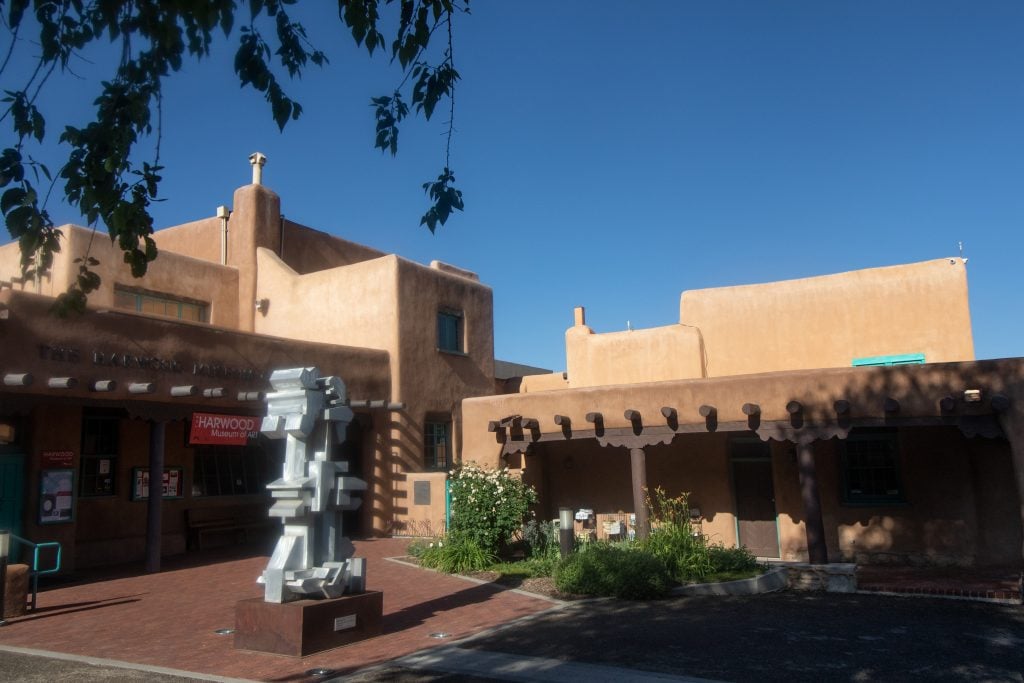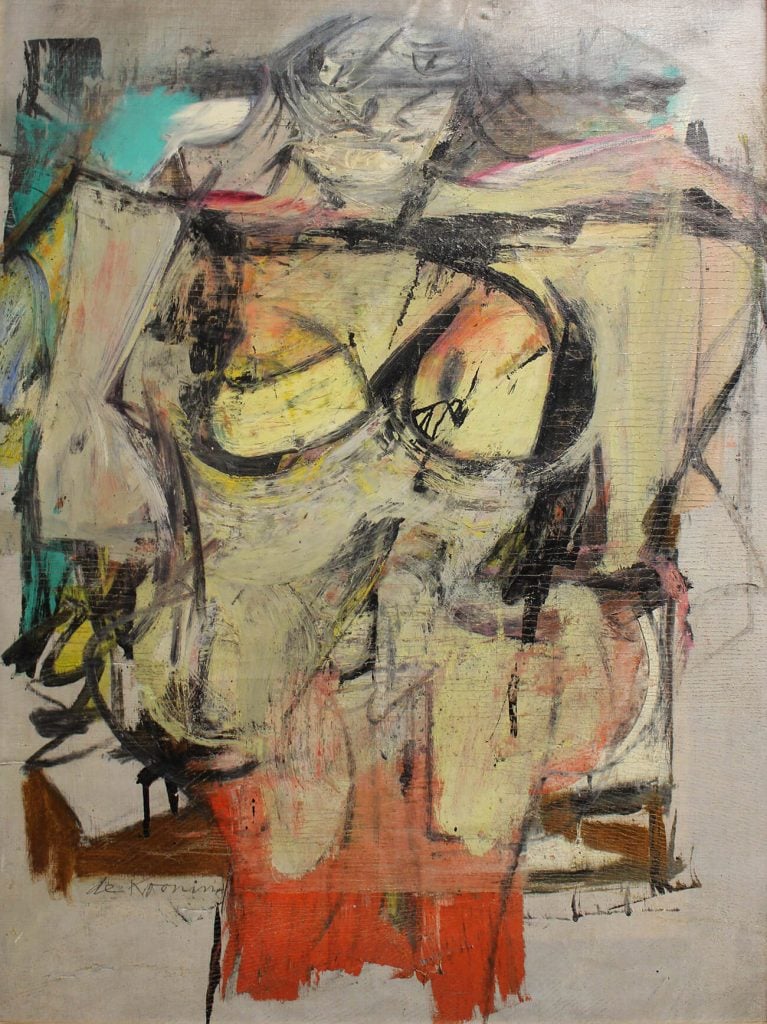Law & Politics
Did This Notorious Couple Who Stole a de Kooning Painting Also Hit a New Mexico Museum?
The de Kooning work was stolen several months after the 1985 heist in Arizona.

The de Kooning work was stolen several months after the 1985 heist in Arizona.

Adam Schrader

A married couple believed to be behind the theft of a Willem de Kooning painting in Arizona in the 1980s are now thought to been behind a heist at the Harwood Museum of Art in New Mexico.
Schoolteachers Jerry and Rita Alter were discovered to have been secret art thieves after Rita died in 2017. Jerry died in 2012. Their estate was purchased Manzanita Ridge Furniture and Antiques of Silver City, New Mexico, for about $2,000. The owners of the store were shocked to find Willem de Kooning’s Woman-Ochre (1954–55), worth $160 million, hanging behind a door in the family’s home. It was promptly returned to the University of Arizona Museum of Art in Tucson from where it was stolen.
The FBI is now aiding in the search for two oil paintings the pair allegedly stole in 1985 from the Harwood Museum, according to KNXV-TV. Those paintings are Joseph Henry Sharp’s Indian Boy In Full Dress (c. 1915) and a Victor Higgins work titled Aspens (c. 1932).
“We can confirm that we are involved in the case, but given the ongoing nature of the investigation, it would not be appropriate to discuss the FBI’s processes at this time,” the FBI said in an emailed statement. Since the FBI created its Art Crime Team in 2003, it has recovered nearly 20,000 items valued at over $900 million.

A view of the Harwood Museum of Art in Taos, New Mexico. Photo courtesy of Bill Curry
The story of the de Kooning theft goes that a man and a woman arrived at the museum when it opened around 9 a.m. one day in 1985. The woman distracted a security guard while the man, with a fake mustache, cut the picture out of its frame. They then walked out with the painting hidden under their clothing and escaped in a rust-colored car.
The nephew of the Alters later produced a photograph taken of the unassuming couple in Tucson the day before the heist, which some have said matched a police sketch of the thieves.
The painting by de Kooning was stolen several months after the Harwood Museum heist on March 20, 1985, and the result of a similar story. At the time of the New Mexico theft, a museum curator was ironically attending a seminar on museum security.
An officer who responded to the theft wrote in police documents that he met with former director David Caffey at the scene who said the works were stolen from the upper level of the museum’s library.
Caffey said that he had taken a woman in a wheelchair up to the floor around 1 p.m. and the paintings were still there. About an hour later, the museum’s librarian Tracy McCallum saw a middle-aged man, slightly bald and wearing a long black raincoat, walk down the stairs from the museum.
“What made the subject that was wearing the long black rain type coat stand out from the rest of the visitors was the way he turned left to walk towards the main entrance of the building,” the officer wrote. “Mr. McCallum advised that the subject looked at him momentarily before he made a sharp left turn. The subject had his hands in his pockets as if he was holding something under his coat.”

Willem de Kooning’s Woman-Ochre (1954–55) in August 2017, shortly after it was recovered in New Mexico and returned to the University of Arizona Museum of Art. ©2019 the Willem de Kooning Foundation/Artists Rights Society (ARS), New York.
No physical evidence of the Harwood Museum heist was left at the scene other than the broken picture frame. “The works in our gallery were and are protected by a night intrusion detection system. For daytime security, the entrance and exit to the gallery is watched, albeit not with complete attention, by the attendant of the library circulation desk,” Caffey wrote in a University of New Mexico memo reporting the theft.
At the time of the Harwood Museum heist, the Sharp painting was worth $35,000 and the Higgins was worth $12,500. Back then, the FBI indicated to the museum it would need proof from an updated appraisal that the works were worth a collective $50,000, provided documents show.
Museum officials at the time added that the works were anchored to the wall by eye screws through their frame and wired tightly together. The thieves were able to loosen the wire for the Sharp painting to remove it but had to break the canvas and three sides of the frame away from the Higgins painting to remove it.
The documents also indicate that the museum reached out to the U.S. Justice Department’s office for Interpol cooperation, which responded that the local police department would need to contact federal authorities regarding any international aspect of the investigation.
At one point in the last four decades, Jerry Atler was photographed practicing the clarinet beneath the Sharp painting, according to the 2022 documentary The Thief Collector.
The museum also indicated suspicions that the couple could have been involved in other art thefts around the world, sharing their globetrotting itineraries through the 1950s, 1960s, 1970s and 1980s. In total, the pair visited more than 67 countries on all continents except Antarctica.
The involvement of the FBI now comes after Lou Schachter, a writer, discovered that the paintings were auctioned by the estate through Scottsdale Art Auction and were the same as the works reported missing from the New Mexico museum. Neither the store owners nor police investigators had realized the other two works were also stolen.
David Van Auker, one of the owners of Manzanita Ridge, told KOB-TV that he believes the Alters were “horrible people.”
“People say, ‘Well, the Alters got away with it. They got away with their crime.’ I want to make sure that’s not the way it goes,” Van Auker said. “The Alters did horrible things, and I don’t want their legacy to be, ‘What nice people they were, what great neighbors they were.’ They were art thieves. They stole from all of us.”